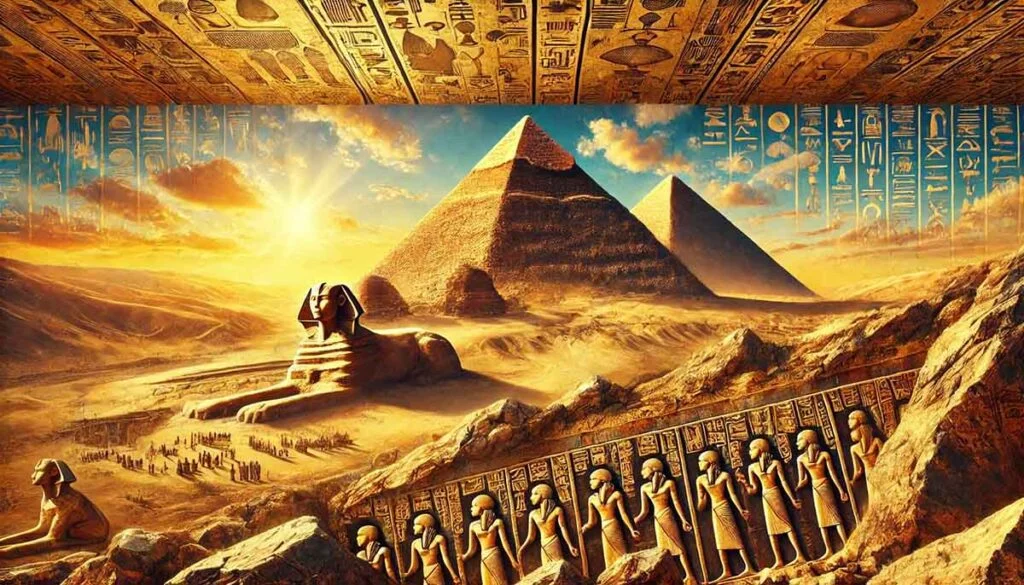Ancient art serves as a window into the lives, beliefs, and cultures of early civilizations. From the intricate hieroglyphs of Egypt to the majestic sculptures of Greece, these artistic expressions offer invaluable insights into human history. This article delves into the diverse forms of ancient art, their cultural significance, and their enduring legacy.
Understanding Ancient Art
Ancient art encompasses the creations of early societies, reflecting their values, religious beliefs, and social structures. These artworks, ranging from paintings and sculptures to pottery and architecture, provide a tangible connection to our ancestors.
The Role of Art in Early Societies
In ancient times, art was not merely for aesthetic pleasure; it played a crucial role in daily life. It was used in religious rituals, as a means of communication, and to demonstrate power and status. For instance, the grandiose pyramids of Egypt were not only tombs but also symbols of pharaonic authority and religious devotion.
Major Forms of Ancient Art
Sculpture
Sculpture was a prominent form of expression in ancient cultures. The Greeks, for example, are renowned for their lifelike statues that celebrated the human form. The “Venus de Milo” and the “Discobolus” are exemplary pieces that showcase the Greeks’ mastery in depicting movement and anatomy.
Painting
While many ancient paintings have not survived the ravages of time, those that remain offer a glimpse into the past. The frescoes of Pompeii, preserved by volcanic ash, depict scenes of daily life, mythology, and nature, providing a vivid picture of Roman society.
Pottery
Pottery served both functional and decorative purposes. The intricate designs on Greek vases, often illustrating mythological tales, highlight the importance of storytelling in ancient cultures. Similarly, Chinese porcelain from the Han dynasty showcases advanced techniques and artistic sophistication.
Architecture
Ancient architecture stands as a testament to the ingenuity and creativity of early civilizations. The Parthenon in Athens, with its Doric columns and intricate friezes, exemplifies Greek architectural excellence. In contrast, the ziggurats of Mesopotamia reflect the religious and social structures of the time.
Cultural Significance of Ancient Art
Religious and Spiritual Expression
Many ancient artworks were created for religious purposes. The intricate carvings of Hindu temples in India, depicting deities and mythological scenes, were intended to inspire devotion and convey spiritual teachings.
Political Propaganda
Art was also a tool for political expression. Roman emperors commissioned statues and monuments to project power and legitimize their rule. The “Augustus of Prima Porta” statue, for instance, portrays the emperor as a divine and authoritative figure.
Social Commentary
Some artworks provide insights into the social dynamics of the time. The terracotta army of China’s Qin dynasty not only demonstrates the emperor’s power but also reflects the hierarchical structure of the society.
Preservation and Legacy
Preserving ancient art is crucial for understanding human history. Archaeological efforts have unearthed countless artifacts, allowing us to study and appreciate the artistic achievements of our ancestors. Museums worldwide house these treasures, making them accessible to the public and ensuring their protection for future generations.
Challenges in Preservation
Despite efforts, many ancient artworks face threats from environmental factors, looting, and conflict. The destruction of cultural heritage sites in war-torn regions underscores the need for international cooperation in preserving these irreplaceable pieces of history.
Conclusion
Ancient art offers a profound connection to our past, illuminating the beliefs, values, and experiences of early civilizations. By studying and preserving these artworks, we not only honor the creativity of our ancestors but also gain insights that enrich our understanding of human history.
FAQs
What defines ancient art?
Ancient art refers to the creations of early civilizations, typically those that existed before the fall of the Western Roman Empire in 476 AD. It includes various forms such as sculpture, painting, pottery, and architecture.
Why is ancient art important?
Ancient art provides valuable insights into the cultures, beliefs, and daily lives of early societies. It helps us understand historical contexts and the evolution of human expression.
How is ancient art preserved?
Preservation involves careful excavation, restoration, and protection of artifacts. Museums play a vital role in housing and displaying ancient art, ensuring its accessibility and safeguarding it from damage.
What are some famous examples of ancient art?
Notable examples include the Egyptian pyramids, the Parthenon in Greece, the Terracotta Army in China, and the frescoes of Pompeii in Italy.
How does ancient art influence modern art?
Ancient art has significantly influenced modern art through its techniques, themes, and aesthetics. Many contemporary artists draw inspiration from ancient motifs and styles.
Where can I see ancient art?
Ancient art can be viewed in museums worldwide, such as the Louvre in Paris, the British Museum in London, and the Metropolitan Museum of Art in New York. Additionally, archaeological sites like the Acropolis in Athens and the Pyramids of Giza offer firsthand experiences of ancient art and architecture.











